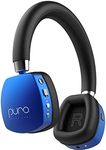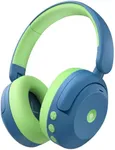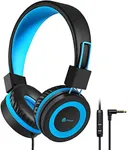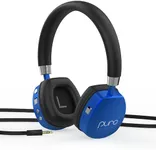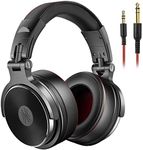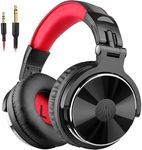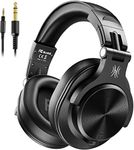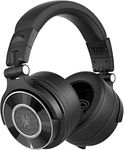Buying Guide for the Best Kids Headphones For Airplanes
Choosing the right headphones for kids to use on airplanes is all about comfort, safety, and practicality. Since children have sensitive ears and may be using headphones for extended periods during flights, it's important to focus on features that protect their hearing, fit well, and are easy to use. Think about your child's age, how long they'll be wearing the headphones, and whether they might want to watch movies, play games, or just block out noise. The right pair will make travel more enjoyable for both kids and parents.Volume LimitingVolume limiting is a feature that restricts how loud the headphones can get, usually capping the maximum volume at a safe level for children’s ears. This is important because kids are more susceptible to hearing damage from loud sounds, especially during long flights. Most kids’ headphones limit volume to around 85 decibels, which is considered safe for extended listening. When choosing, make sure the headphones have a reliable volume limiter and avoid models that allow easy bypassing of this feature. If your child is very young or sensitive to sound, stick to the lower end of the volume range.
Fit and ComfortFit and comfort refer to how well the headphones sit on your child’s head and ears, and how comfortable they are to wear for long periods. This is crucial for airplane use, where kids might wear them for hours. Look for adjustable headbands and cushioned ear pads. For younger children, smaller, lightweight designs are best, while older kids might prefer slightly larger headphones. Always consider your child’s head size and whether they wear glasses or have other comfort needs.
DurabilityDurability means how well the headphones can withstand drops, twists, and general rough handling by kids. Air travel can be tough on gear, so sturdy construction is important. Headphones made with flexible, reinforced materials and tangle-free cables tend to last longer. If your child is very active or tends to be rough with their belongings, prioritize models known for their toughness.
Wired vs. WirelessThis spec refers to whether the headphones connect with a cable (wired) or use Bluetooth (wireless). Wired headphones are simple and don’t require charging, making them reliable for long flights, but the cable can get tangled. Wireless headphones offer more freedom of movement and no cords to manage, but they need to be charged and may not work with all airplane entertainment systems. Some headphones offer both options. If your child will use the headphones mainly with in-flight screens, wired is usually safer; for tablets or phones, wireless can be more convenient.
Noise Isolation or CancellationNoise isolation means the headphones physically block out some outside noise, while noise cancellation uses technology to reduce background sounds. This is helpful on airplanes, where engine noise can be loud and distracting. Noise isolation is usually achieved with cushioned, over-ear designs, while noise cancellation is a more advanced feature found in some models. For most kids, basic noise isolation is enough, but if your child is sensitive to noise or you want a quieter experience, consider headphones with active noise cancellation.
Portability and FoldabilityPortability and foldability refer to how easy it is to pack and carry the headphones. Foldable or compact designs are easier to fit into carry-on bags or backpacks, which is especially useful when traveling. If you want to save space or your child will be carrying their own headphones, look for models that fold up or come with a travel case.




